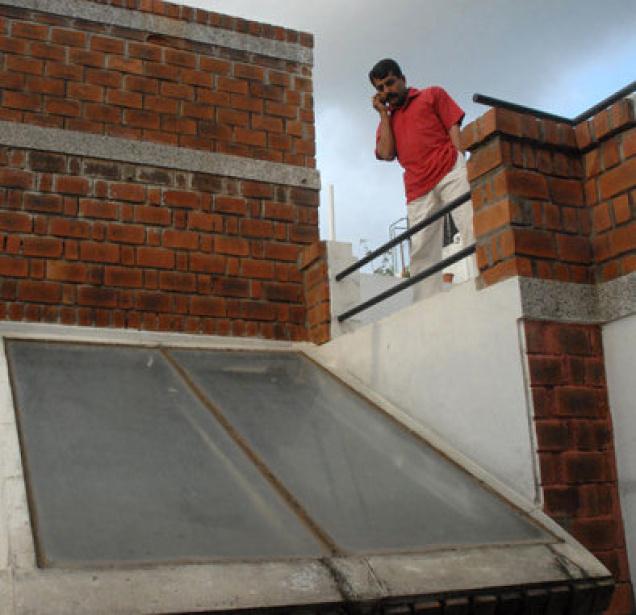(VINAYASHREE JAGADEESH)
Bangalore is still looking for a place in the sun in the renewable energy sector
With power cuts forcing Bangaloreans to sweat it out in summer, many are literally looking at the sunny blue skies in desperation. And the redemption is shining bright — in the form of the Sun. No wonder Bangalore is believed to have the highest percentage of solar water heaters in the country (taking into account the ratio of solar water heaters to the number of houses). This has reduced the burden, even if minimally, on the conventional grid, groaning under the huge demand for power. The city is fortunate with those in the renewable energy trade saying Bangalore weather is ideal for the sun’s heat to be harnessed as people require hot water through the year. The demand for solar heaters is also going up by 50 per cent every year.
Big saving but…
As many as 87,513 solar heaters are being used in the Bangalore metropolitan area, each of which saves two kilowatt hour (kwh) per unit, according to Bescom (figure as on February 28, 2013). Assuming each household utilises the water from the heater for two hours a day, an estimated 3.50 lakh units are being saved per day, thus saving around Rs. 1.75 crore.
Lakshmipathi, Deputy General Manager, Inspections, Bescom, says that they have made it mandatory for all residential sites (measuring 60 ft x 40 ft and above) to have solar water heaters. However, very few apartment complexes are opting for them. This, despite the 30 per cent subsidy offered by the Ministry for New and Renewable Energy (MNRE) on each installation as an incentive.
Karnataka Renewable Energy Development Limited (KREDL) officials, meanwhile, are planning to install rooftop solar systems on government offices in the city.
Sense of freedom
H.K. Gowdaiah, who installed a hybrid unit of solar and wind energy at his residence in Sir M. Visvesvaraya Layout four years ago, says he is more comfortable and independent with the energy generated from the solar panels and the windmill. This helps him save at least Rs. 1,000 a month in power bills. “Usually when there is less sunlight, it tends to get windy; so, I benefit from this system. However, all necessary precautions have to be taken before installing the windmill as the wind velocity may vary across the city,” he says.
Mr. Gowdaiah also says not many opt for such alternatives as they are not cost effective. He, however, says that it is important to prioritise.
“When we spend so much on flooring, furniture and other items, we should invest in renewable energy as a long-term investment. It is advisable to plan the construction of the house keeping in mind the installation of such systems,” he advises people.
Renewable sources of energy such as solar, wind, biogas and co-generation contribute 13.4 per cent of energy generated in the State.
According to KREDL (Karnataka Renewable Energy Development Ltd.), the State generates 11,237.9 megawatt (MW) energy, of which 4,070.54 MW comes from renewable energy sources.
Wind energy contribution is the highest with 2,182.53 MW, followed by co-generation (simultaneous generation of multiple forms of energy in an integrated system) at 1,082 MW.


